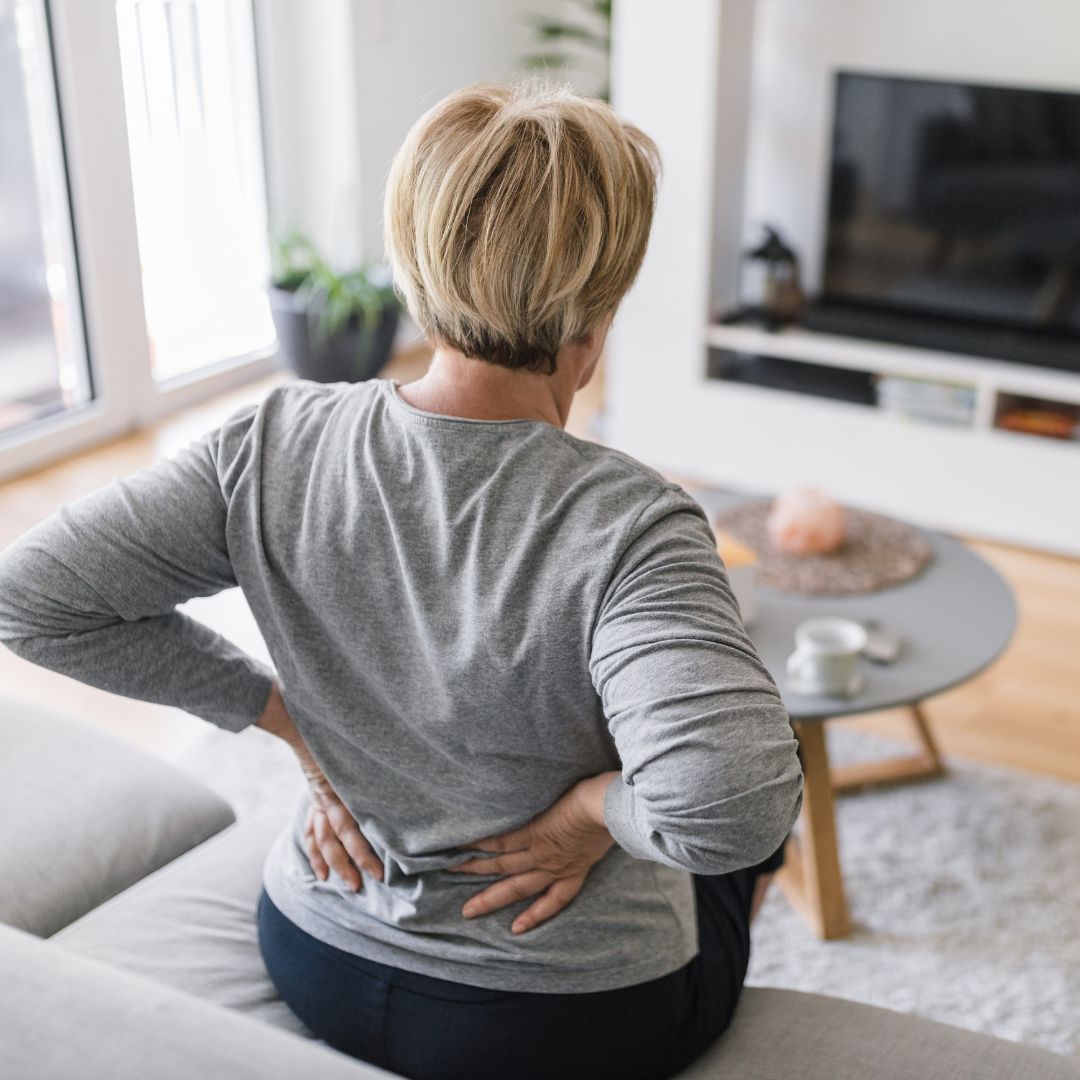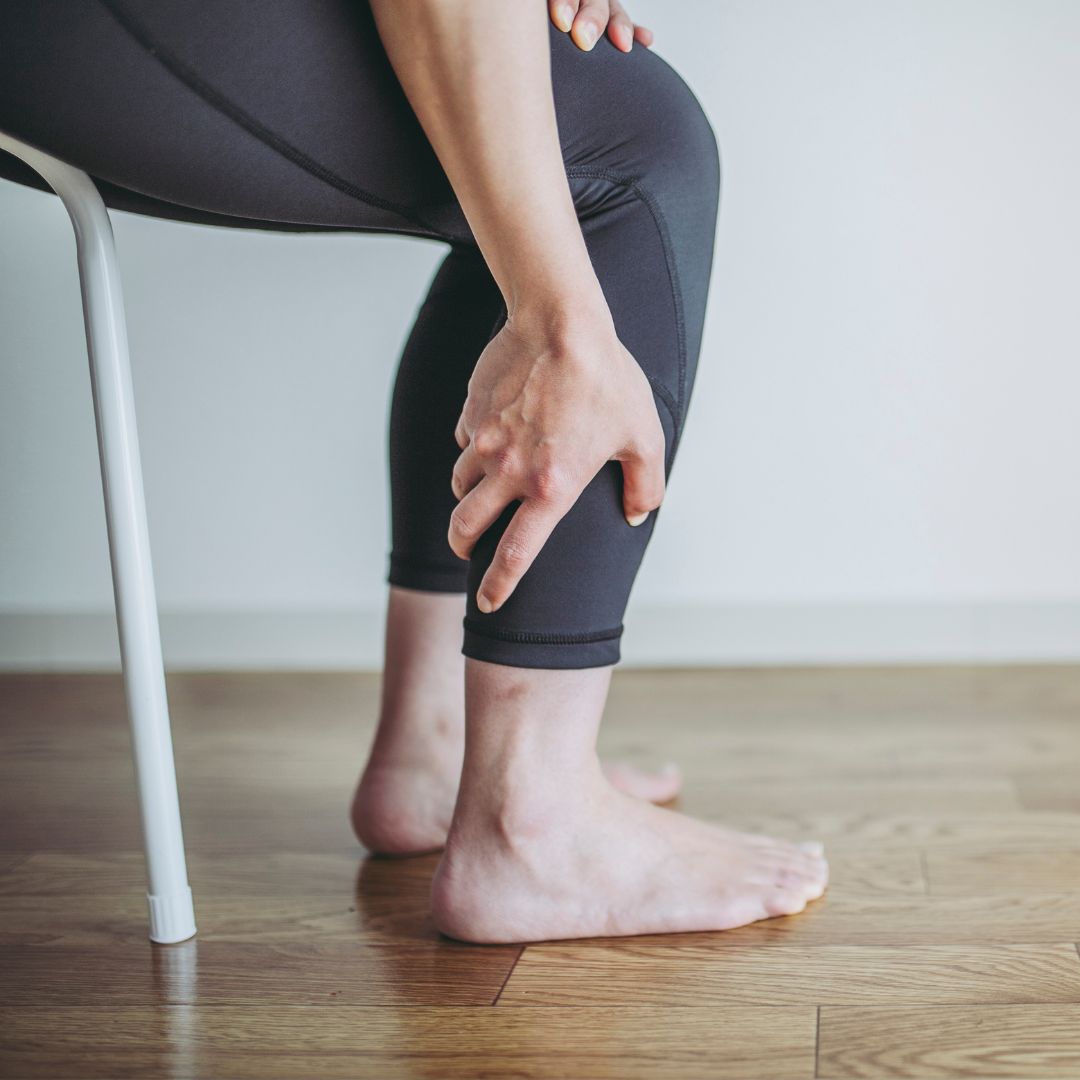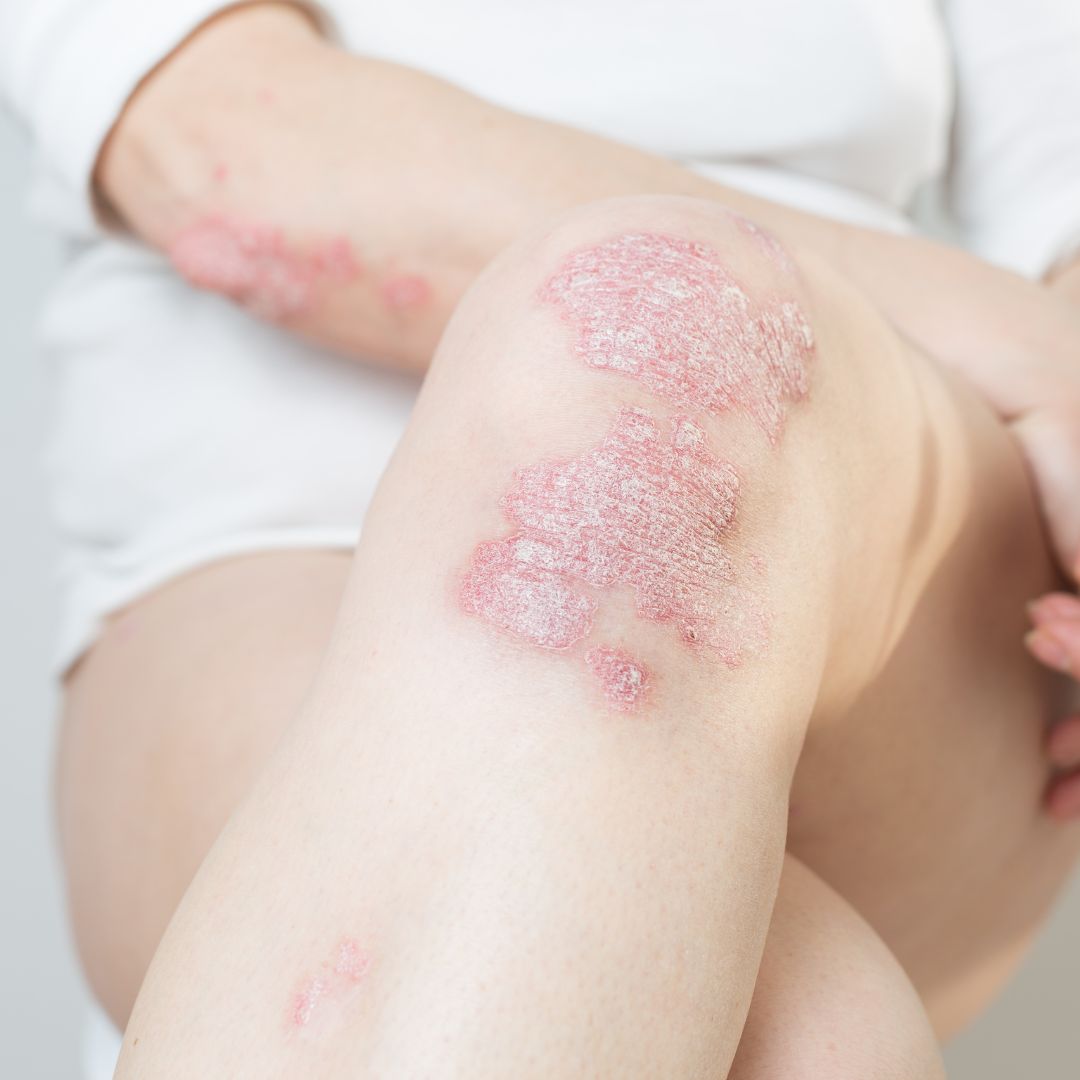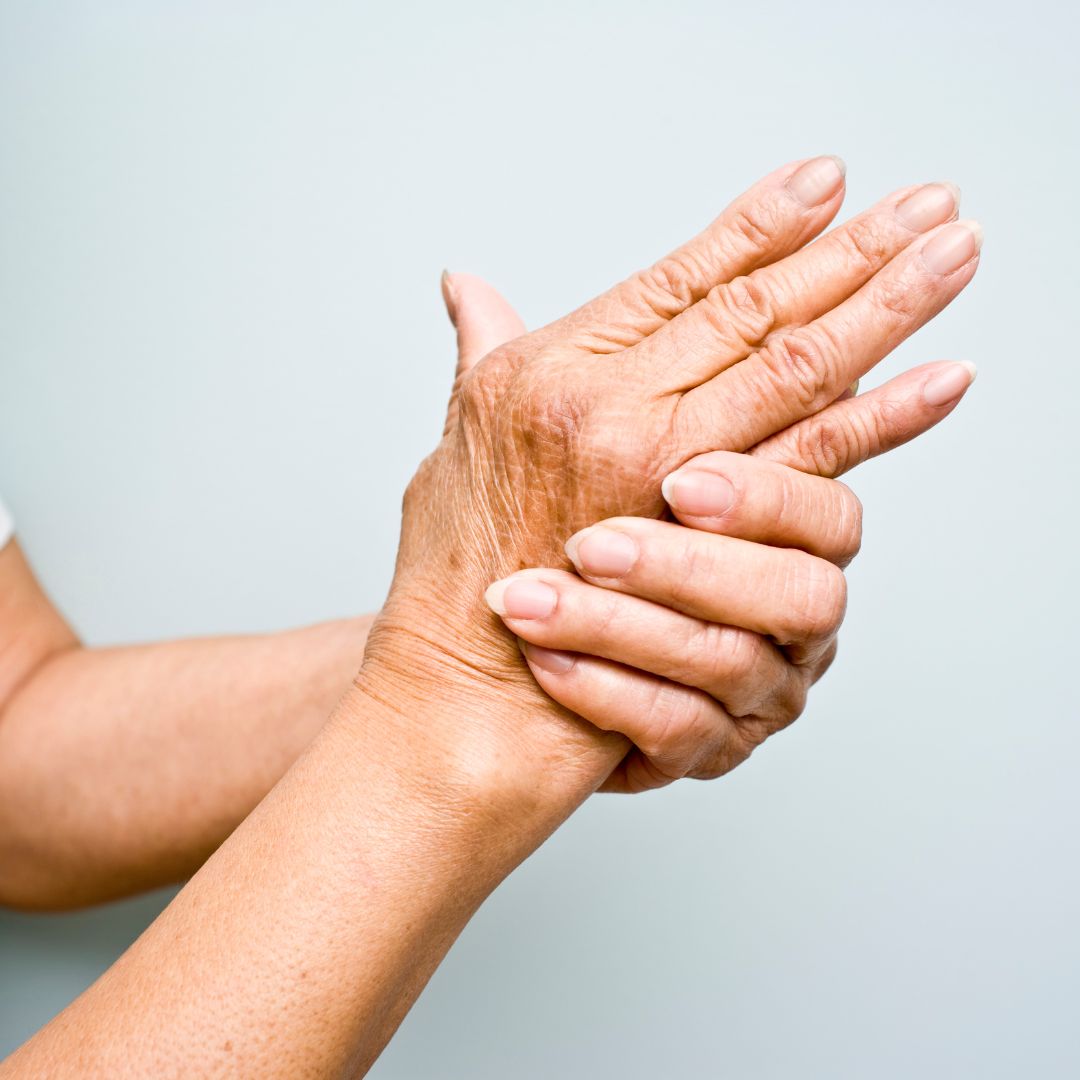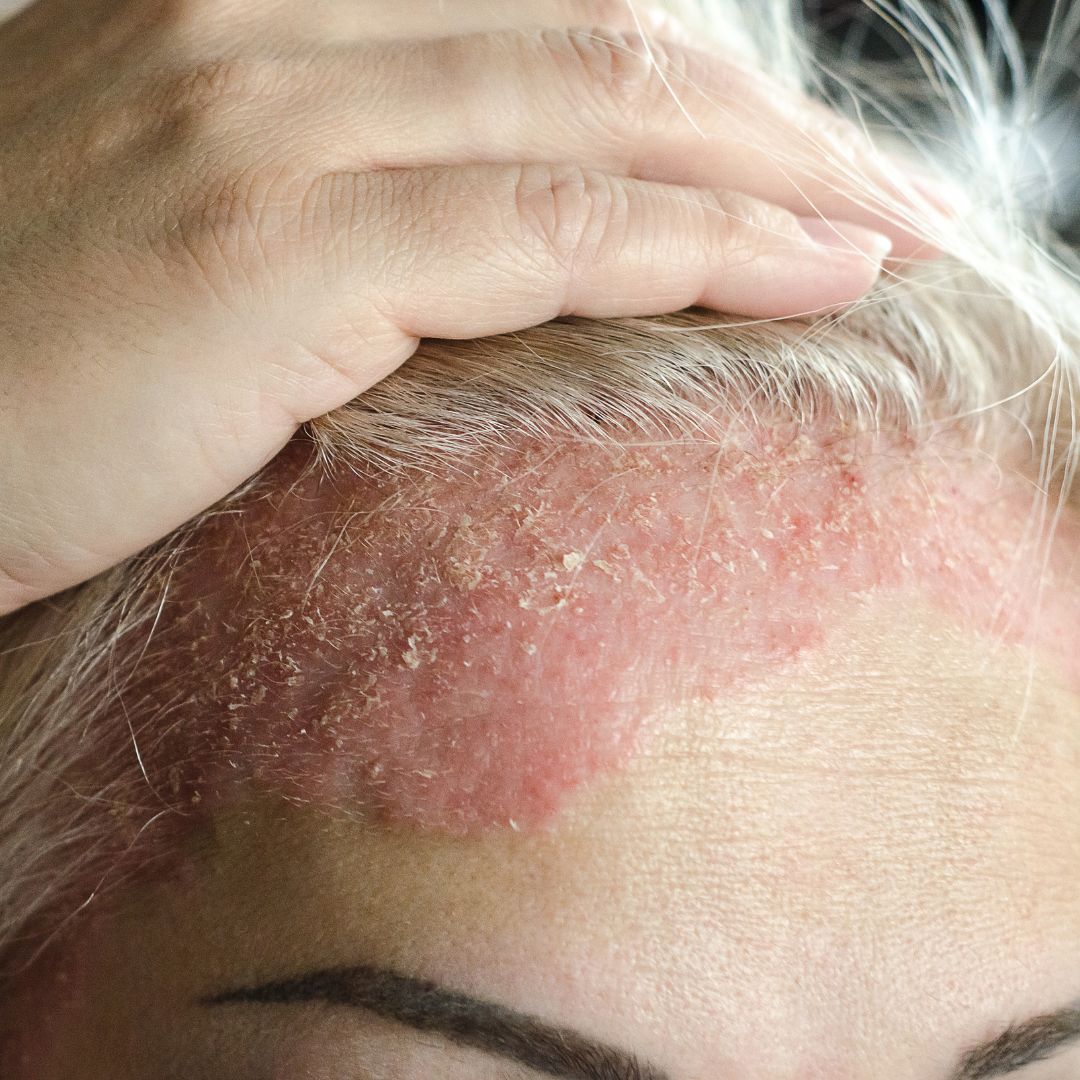Eczema and Stress: The Connection and How Homeopathy Can Help
Most people don’t consider eczema as a severe ailment. However, it can still be a pain when it disrupts your daily life. One of the most frustrating parts of this chronic skin disease is the random flare-ups that happen with no obvious cause of what triggered them.
Learn moreManaging the Connection: Stress and Its Impact on Lower Back Pain
It’s no secret that high levels of stress can affect the body beyond the brain. And if not managed, it can contribute to physical issues, including lower back pain. So much so that the more a person deals with stress, their back pain can become exacerbated.
Learn moreExploring Neuropathy Pain: Causes, Symptoms, and Coping Strategies for Relief
Have you experienced shooting or burning pain that can come and go but at times be unbearable? If so, you may have nerve damage or a malfunctioning nervous system, also known as neuropathic pain.
Learn moreThe Surprising Connection Between Diet, Chronic Inflammation and Lower Back Pain
By Dr. Peter Klapper Ph.D. Did you know that by making a few tweaks to your diet you can alleviate lower back pain? When a person experiences chronic inflammation, it can contribute to various health issues, including back pain. Sometimes, the solution is all a result of what you are putting into your body.Can Certain Foods Cause Inflammation?Yes! Foods that are over-processed, fried, and quick and ready to eat out of the box are packed with added sugar. Those foods may include fast food, processed meat such as hot dogs, ham, bacon, candy, sweetened snacks such as cereal, red meat, alcohol, battered, deep-fried foods, and soda.Sure, all things can be fine in moderation, but if you tend to overeat ultra-processed foods and have back pain, it may be your diet.Anti-Inflammatory FoodsBy incorporating more anti-inflammatory foods into your diet, you may start to notice a change in the amount of pain you feel in your lower back. Those foods include:Fatty Fish: Certain fish are rich in omega-3 fatty acids, which have anti-inflammatory properties. Try adding in salmon, mackerel, sardines and trout as a substitute to red meat.Berries: Various berries such as blueberries, strawberries, and raspberries are packed with antioxidants that can help reduce inflammation.Leafy Greens: By adding in spinach, kale, and Swiss chard into your diet, you will reap the benefits of vitamins and minerals that have anti-inflammatory effects.Nuts and Seeds: Various nuts contain healthy fats and antioxidants that can combat inflammation and alleviate lower back pain. Those include almonds, walnuts, flaxseeds and chia seeds.Turmeric: Turmeric is widely known to have anti-inflammatory properties because it contains a spice called curcumin. When cooking, consider adding turmeric to your dishes or take a supplement. Whole Grains: When you can, incorporate whole grains into your diet such as brown rice, quinoa and whole wheat over refined grains. Whole grains contain fiber and nutrients that can help reduce inflammation.Dairy Alternatives: Some may experience more inflammation from dairy products. Great substitutes can include almond milk, coconut milk or any lactose-free products.Healthy Fats: Avoid trans fats by substituting with healthier fats. Those may include products such as olive oil, avocado and nuts. All in which have anti-inflammatory properties that will help reduce back pain.
Learn moreUnderstanding and Alleviating Calf Muscle Pain
By Dr. Peter Klapper Ph.D. Have you ever experienced a dull, sharp aching pain in the back of your lower leg? It could be the result of an issue in your calf muscle. While concerning, it’s important to know this type of injury is common for all activity levels.Whether you’re an athlete, an avid walker, or someone who is constantly on their feet, calf pain can be a real issue. That said, what causes calf muscle pain?Calf Muscle Pain CausesCalf pain can be a result of many different issues. The most common conditions are as follows:Muscle Strain: A muscle strain typically occurs due to the overuse of a specific muscle. In the case of the calf, this could be from exercises that overexert the lower leg such a running, powerlifting, biking, playing tennis, soccer, etc. Once strained, a person may experience limited range of movement, pain and soreness.Muscle Cramps: Cramps in the calf are sudden and painful contractions of the muscle that can last a few seconds or several minutes. They’re usually caused by dehydration, exercise, injuries and mineral deficiencies.Achilles Tendinitis: The Achilles tendon connects the plantaris, gastrocnemius and soleus muscles in the back of the ankle. Achilles tendinitis occurs by overuse, strain or stress on the tendon and causes pain in the heel or behind the calf when you touch or move it.Poor Footwear: If an individual has shoes that don’t fit properly, the lack of support can cause issues in the feet, lower leg and calf muscle.Sciatica: Sciatica occurs when an individual has herniated a disc in their back, and as a result, it has put pressure on the sciatic nerve. This nerve controls muscles in the lower leg and back of the knee and can cause pain, numbness, and tingling. All which can cause pain in the calf muscle.Diabetic Peripheral Neuropathy DPN: DPN is a form of nerve damage caused by diabetes and pain may be experienced in the feet and lower leg.Compartment Syndrome: When too much pressure builds up within the muscles, a condition such as compartment syndrome occurs. The symptoms may include severe pain that doesn’t improve with medication, trouble mobilizing and severe tightness. If this is the case for you, it’s important to seek medical intervention immediately.Deep Vein Thrombosis (DVT): Another serious condition is DVT, which is the result of a blood clot forming deep in the vein in the arm, leg and calf. Symptoms may include visible veins, swelling in the leg, cramping, leg pain, and skin discoloration. If you develop the above symptoms, seek medical attention immediately.How To Prevent Calf Muscle PainAs with any muscle condition, there are ways to prevent injury and overuse of your calf muscles. Simple precautionary measures such as warming up and stretching before exercising and wearing proper footwear can make all the difference. Other preventative measures may include: Hydration: It’s important to drink a lot of water. By staying adequately hydrated, you can prevent muscle cramps. Gradual Progression: Check in with your body. If you haven’t been running, don’t try and run 10 miles. By gradual progressing in an activity you can start training your muscle to endure a new intensity level. Strength Training: Focus on building strength in your calf muscles at the gym. The more you strengthen various muscles, the more likely you can reduce the risk of injury. Treatment Options For Calf Muscle PainIf you have strained your calf muscle or have cramping that isn’t going away, there are natural ways to help alleviate the pain. A common treatment includes the RICE method.Rest the areasIce the area for 20 minutes, using a covered ice pack.Compress the area with a bandage (but if the pain gets worse, loosen the bandage).Elevate the lower leg by sitting or lying down so the leg is above the level of the heart.Other options do include taking over the counter anti-inflammatory medications, stretching and mobility exercises and taking a break from all activity that may exasperates any pain in the calf muscle. If the pain hasn’t gone away with any of the above treatments, consult your doctor or medical provider
Learn moreUnderstanding the Different Types of Pregnancy-Induced Back Pain
Having trouble with lower back pain during pregnancy? Read on to learn more about the different types and how they can be managed through natural remedies.
Learn moreUnmasking the Silent Struggle: Understanding the Impact of Chronic Pain on Daily Life
Living with chronic pain can be isolating and exhausting. Learn more about its impact on daily life, and explore natural remedies to help you manage your symptoms.
Learn moreErgonomics; Creating a Back-Friendly Workspace to Combat Lower Back Pain
Are you struggling with lower back pain? Discover how ergonomics can help! Learn the simple steps in creating a back-friendly workspace that will give you long lasting relief.
Learn moreUnderstanding Lower Back Pain; How to Prevent and Relieve Pain
By Dr. Peter Klapper Ph.D. As we age, it’s normal to experience the aches and pain that come with growing older, especially in your lower back. However, you may wonder at what point is the pain you’re experiencing minor or a larger problem that needs to be addressed.Lower back pain is a common condition that affects 619 million people worldwide. It can come on as a dull, constant ache to a sudden sharp pain that makes day-to-day tasks a challenge. There are various reasons it can occur. Some may experience lower back pain when coughing or after performing a deadlift. All of that said, it comes as no surprise that with so many suffering from lower back pain, it is a major public health issue.So, is this just a condition that comes with age or injury? First, it is important to understand the underlying causes of lower back pain and then the various ways that people find relief.Understanding Lower Back PainThose that experience lower back pain, may have similar symptoms to others with the same ailment, yet a different root cause. Various factors and lower back pain causes may include: Poor Posture: Those who are sitting or standing with incorrect posture for prolonged periods of time can strain the lower back muscles and lead to pain over time. Muscle Imbalances: Weak or tight muscles, especially in the core and pelvic area, can disrupt the natural balance of the spine leading to pain. Especially if it’s from repeated heavy lifting or an awkward movement that leads to a strain. Lifestyle Factors: Sedentary lifestyles, lack of exercise, smoking and obesity can contribute to lower back pain. Ruptured Discs: When the soft inner core of a disc in the spine pushes through the outer layer, it can irritate nearby nerves and cause pain. Arthritis: Degenerative conditions like osteoarthritis can lead to the breakdown of the spine's joints and discs, resulting in pain in the lower back. Injuries: Accidents, falls, or lifting heavy objects improperly can strain or injure the lower back. Risk Factors For Lower Back PainWhile the factors above can cause back pain, there are also risk factors that can make it more likely for a person to experience chronic lower back pain. Those factors include:Age: Yes, it’s not in your head that you’re older and you have more aches and pains. Back pain becomes more common as you get older due to the wear and tear that is put on the spine and can start as early as 30.Lack of Exercise: If you aren’t exercising your muscles in your back and abdomen, you they will become weak which can lead to back pain.Obesity: If you have excess body weight, it can put more stress on your back.Smoking: Smoking reduces blood flow, and if your spine isn’t getting enough blood flow, it can decrease your body’s ability to heal. Not to mention it also can increase your risk of osteoporosis. Coughing from smoking can also be a contributor to back pain and lead to herniated discs.Improper Lifting: A lot of back injuries are due to poor form when lifting. If a person uses their back instead of their legs when lifting something heavy, it can strain the muscles and lead to severe back pain.Sports: Depending on the sport, high-impact activities can lead to back injuries without the proper conditioning.Medical Conditions: Various medical conditions such as arthritis, osteoporosis and spinal stenosis can increase risk of back pain. And in rare cases, back pain can be caused by infections or tumors in the spine.Unsupportive Furniture: Do you have lower back pain after sleeping on your mattress? Sleeping on an unsupportive mattress or sitting on furniture that doesn't provide adequate back support can contribute to back pain.Mental Health: Those who are prone to anxiety or depression appear to have a greater risk of back pain. When you’re stressed, you tend to tighten your muscles which can lead to increased back discomfort.Natural Ways to Find Relief from Lower Back Now that we have identified what causes back pain, how do you treat it? While there are medications and lower back pain relief products available, both prescription strength and over the counter drugs are not advisable to take long-term due to effects and dependence. And other medical options such as surgery may not be a fit for everyone. But don’t give up hope, there are many natural ways to treat lower back pain.Dietary Changes – A few changes to your diet may be a game changer for your back pain. Some diets are highly inflammatory and include a lot of trans fats, refined sugars and processed foods that could be contributing to back pain. Not to mention, a healthy diet can help an individual maintain a healthy weight, strengthen your bones, and reduce pressure that is put on the spine.Physical Activity: Engaging in regular exercise, such as walking, swimming, or yoga, can strengthen the back muscles, improve flexibility, and alleviate pain.Physical Therapy: Physical therapy for chronic back pain may include retraining your posture, testing the limits of pain tolerance, stretching and flexibility exercises, aerobic exercises, and core strengthening.Mindfulness and Self Care: Chronic back pain can take a toll on a person physically but also emotionally, which is why it’s important to take the time to deal with the psychological aspects of back pain. This may include meditation, massage therapy, tai chi, yoga and other cognitive and relaxation-based therapies and strategies. The goal is to retrain your brain on how you focus on pain.Alternative Treatments: Various treatments such as acupuncture, a traditional Chinese medicine practice that involves inserting thin needles into specifics points of the body, have been known to alleviate back pain. Another option people seek for relief is visiting a chiropractor so that their spine can be adjusted.Exercises: Lower back pain relief exercises such as core strengthening can help prevent and provide long-term relief. A strong core supports the spine and helps distribute the load evenly, and most exercises can be done anywhere. Lower back pain exercises at home that should be part of your routine include planks, bridges and abdominal crunches.Stretching of the hamstrings and hip flexors should also be incorporated into your exercise regimen to help relieve tension on the lower back, especially after prolonged periods of sitting.Make Environmental Changes: Ensure that your workspace and home environment are ergonomically designed to reduce strain on your back. Invest in a supportive chair, adjust your computer screen height, supportive footwear, and use lumbar cushions if necessary.Posture - Day and Night: During the day, be mindful of your posture when you’re sitting and be sure to keep your feet flat on the ground and your knees at hip level. When standing, distribute your weight evenly on both feet and keep your shoulders back.At night, sleep on a mattress that provides proper support for your back and use a pillow that keeps your head and neck in alignment with your spine.Herbal Remedies: Certain herbs and spices can heal your back in a natural way. Herbs such as valerian root, known to help reduce the sensitivity of nerves, and turmeric and ginger, which have natural anti-inflammatory properties, all play a part in alleviating pain in the lower back.Back Pain – Organic Plant Medicine: Our natural back pain relief medicine provides powerful relief from sudden sharp pain or constant aches from lower back, sciatica, neck and shoulder pain. Regardless of the treatment plan you decide is best for you, we always advise that you talk with your doctor to see what option will benefit you long-term.Moving ForwardWe get it, lower back pain can be completely debilitating and change a person’s quality of life. However, it can be managed and prevented through various methods. If you are experiencing back pain, first, try and address the root cause to see if you can make changes immediately to your lifestyle. Then work with your doctor to find the best treatment plan moving forward.Don’t lose hope. You can get your life back with consistency, patience, and dedication to making changes to your lifestyle and finding the path to a life free of the limitations of lower back pain.
Learn moreUnraveling the Mystery: Plaque Psoriasis and its Autoimmune Connection
Discover the connection between plaque psoriasis and the immune system in this informative article. Learn about the causes, symptoms, and treatment options for this chronic skin condition.
Learn moreThe Link Between Psoriasis and Arthritis: Exploring Psoriatic Arthritis
Psoriatic arthritis is a condition that affects individuals with psoriasis. Discover the link between these two conditions and learn about the symptoms, causes, and treatment options in this informative guide.
Learn moreScalp Psoriasis: Home Remedies and Tips for Relief
Scalp psoriasis is a chronic autoimmune skin condition that affects the scalp. It occurs when the immune system mistakenly attacks healthy skin cells, leading to an accelerated growth of skin cells. This excess build up is what results in thick, silvery-white scales and red patches on the skin and scalp.
Learn more


